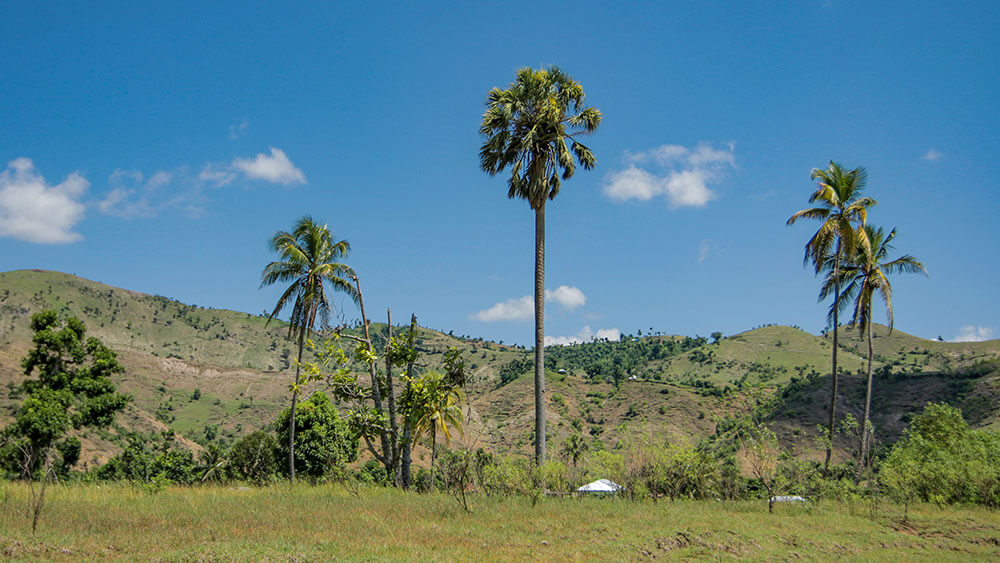
Participants at the International Association of Science Parks 2020 Virtual Conference were connected to Treedom’s website when they clicked on the “IASP Forest” at right.
When AIM Group International customized its proprietary platform, AIM Communication, for the International Association of Science Parks (IASP) 2020 Virtual Conference, Dec. 1-3, its goal was to give participants an immersive online experience that would engage and entertain them, said Annalisa Ponchia Baccara, CMP, CMM, AIM’s director of innovation, customer experience, and international congress development. Every detail in the 3D visual environment was carefully considered and personalized, said Ponchia Baccara, who is located in Padua, Italy — down to the exact mix of gender, age, and race of the figures who appeared onscreen chatting and cycling outside the virtual venue.
Some of what participants saw online was destined for life beyond the screen and the event itself. The trees that can be glimpsed through the windows in the lobby-like virtual IASP Hall represent — and resemble — actual cacao trees to be planted in villages in Cameroon. The trees, one for each meeting participant, were purchased through a company called Treedom, which plants income-producing fruit trees in Africa, Asia, and South and Latin America.
Treedom’s mission, supporting sustainable economic opportunity while combatting deforestation, is fully aligned with IASP’s goals of leveraging its global network to spur innovation and economic growth. But Treedom also proved to be a good experiential fit for the engagement that IASP and AIM International set out to create — Treedom’s platform was designed from the outset to feel more like a game than a transaction, and to allow users to follow the stories of the trees they plant online.

A farmer in Cameroon carries a seedling from Treedom.
A Real-life FarmVille
The company was cofounded 11 years ago by Federico Garcea, who was born in Italy and was then working with a company that was bringing energy to the Cameroon rainforest. Garcea noted with dismay both the ongoing deforestation of the forest and the fact that farmers were forced to sell land and trees to make ends meet. At the time, Garcea also was spending time on the since-shuttered agriculture simulation social network game FarmVille, competing with his girlfriend to see which of them could build the best farm. Short of time to earn points, Garcea found himself charging his credit card multiple times to buy trees.
A friend, Tommaso Speroni, told Garcea he was being an idiot — that
he would never impress a woman by spending money on virtual trees. A question formed in Garcea’s mind: If 30 million people would pay for virtual trees while playing FarmVille, how many of them would pay online to plant real trees for real farmers? And if the trees were fruit trees, then they could also serve as sources of income for local communities, he realized. Inspired, Garcea and Speroni created the first iteration of the Treedom website in 10 days and began to hire farmers to start tree nurseries in Cameroon.
Treedom, now based near Florence, Italy, has evolved since its early days, Garcea told Manthan Shan, who interviewed the company cofounder on the podcast Planet Impact. Instead of hiring farmers directly, Treedom now serves as a bridge, Garcea said, between tree-purchasing individuals and organizations and farming cooperatives and NGOs, which has allowed them to expand their model to rural communities in 17 countries.
What hasn’t changed is the ability of Treedom’s users to connect with one another and to follow the story of every tree: Each is photographed, geolocated, and linked to a diary that tells the stories of the countries where they are planted and the farmers who tend them. Groups like IASP can choose from a menu of trees and countries and give their forests a name. During the IASP conference, participants clicked on an icon in the platform and were directed to a dedicated web page where they could choose a tree for the IASP Forest.
Since 2010, Treedom has worked with nearly 5,000 companies and 750,000 individuals, and more than 100,000 farmers to plant nearly 2 million trees. Their model “is brilliant,” Ponchia Baccara said. In addition to helping create a sense of community at the IASP meeting, the IASP Forest contains more than 600 trees, which will remove CO2 from the air and produce income for an estimated 15 years.

Treedom’s trees now spring up all over the world, after the idea for the social platform germinated in Cameroon (above).
Trees + People
Treedom’s capacity to build community is more than screen deep. In a recent blog post, cofounder and CTO Tommaso Speroni wrote about how takeaways from the 4,000-person Global Landscapes Forum, which was held in November 2020, lined up with Treedom’s values, including the need to engage the men, women, and young people living in local communities to ensure the survival of tree-planting projects.
That philosophy “has been part of Treedom’s DNA since its foundation in 2010 and sums up what it means to be ‘tree growers’ and not simply ‘planters,’” Speroni wrote. “It is essential to involve local communities right from thebeginning, in order to start and then carry out each project, with the prospect of seeing them grow and develop successfully. It is the local communities that are personally involved, they are the ones who take care of the trees, they are the ones who enjoy their fruit. Ultimately, they are the best guarantee that those trees will be protected and cared for in order to grow and live as long as possible.”
Barbara Palmer is deputy editor of Convene.
